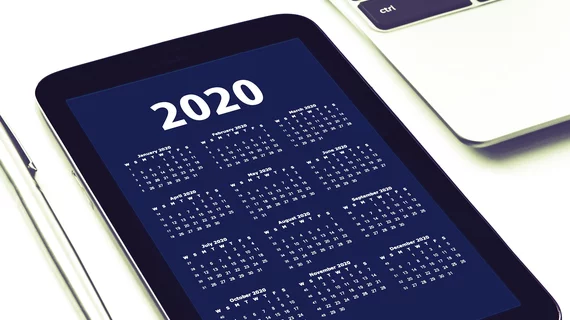The top 10 Health Imaging stories of 2020
It’s been a tough year by all accounts: COVID-19 has dominated daily life as well as the headlines. Radiologists have played a key role, and continue to do so, during this pandemic, deploying imaging tools for insights into the disease and operating on the front lines.
Not surprisingly, all of Health Imaging’s top 10 stories were related to the ongoing crisis. Wanting to avoid a pandemic-only list, we included some of the most interesting, as well as most-clicked, stories from this past year:
10. Nearly 90% of radiology residents said selection committees favor MDs over DO applicants
This August study fell just outside the top 10 but resurfaced a long-held bias in medicine favoring allopathic degrees over osteopathic doctors. Four times as many DO grads said the degree altered their medical careers. The issue of who is and who isn't a "real" doctor popped up again online recently.
9. COVID-19 brain MRI findings reveal three distinct neurological patterns
Patients were complaining, and still are, of lingering brain fog and other neurological problems after recovering from COVID-19. Back in June, a report published in Radiology discovered three distinct neurological patterns in brain MRI exams. Evidence of the virus’ neurological impact continues to grow.
8. ACR ‘extremely disappointed' with CMS’ finalized proposal that could cost imaging field billions
After the Centers for Medicare & Medicaid Services in August released proposed payment policy changes for next year, the ACR wasn’t pleased with the 10% cuts that would hit radiology, along with other specialties. More than 70 healthcare groups are currently fighting to overturn the policy changes set to begin on Jan. 1.
7. Trump taps board-certified radiologist as new COVID-19 advisor
The U.S. had already been decimated by the pandemic by the time neuroradiologist Scott Atlas, MD, arrived in Washington, D.C., as an official White House COVID-19 advisor. A highly controversial figure, Atlas’ approach to the pandemic was condemned by colleagues and Stanford University where he was a Hoover Institution fellow. He resigned from his post in the White House earlier this month.
6. New MRI contrast agent detects cancers before they spread to the brain
A team of German-led researchers developed a tracer based on xenon-filled molecules shaped like hollow soccer balls. The material greatly improved the contrast structure and thereby sensitivity of MRI.
5. CT detects coronavirus abnormalities before symptoms appear, reveals new clinical findings
Researchers increasingly utilized medical imaging to understand the coronavirus. And a February study found CT could detect early abnormalities of the disease and reveal new findings, such as ground-glass opacities and bilateral consolidation. Both would go on to become COVID-19 imaging hallmarks.
4. New x-ray detector ‘on the brink of revolutionizing’ medical imaging
Two U.S. Department of Energy national labs helped develop a novel x-ray detector that powers itself, uses ultralow radiation, and produces images with 100 times more sensitivity than conventional approaches. The prototype detector uses a thin film of the oxide mineral perovskite and may be able to replace traditional silicon-based detectors that go for nearly $500,000.
3. FDA clears ‘world’s first’ portable, low-cost MRI following positive clinical research
In February, Hyperfine gained 510(k) clearance for its bedside MRI system that is around 20 times cheaper than traditional $50,000 systems, requires 35-times less power and weighs 10 times less than 1.5T machines. The Guilford, Connecticut, company has made a number of other announcements since the FDA clearance.
2. Chest x-ray used to analyze first US patient with coronavirus
As the virus worked its way across the globe, the New England Journal of Medicine in March published a study of the first U.S. patient with a lab-confirmed infection. After a few chest x-rays showed no evidence of abnormalities, an exam on the fifth day of hospitalization showed evidence of pneumonia. Experts would later prove that radiographs alone couldn’t be counted on to diagnose the disease.
1. ‘Time to act is now’: Chinese researchers confirm abnormal chest CT findings in first coronavirus patients
Almost one year ago, way back in January, the Lancet published a study of the initial 41 patients admitted to a COVID-19 hospital in Wuhan, China. Each had abnormalities suggestive of pneumonia on their CT scans, with fever, cough and fatigue the most commonly reported symptoms. At that point the authors warned the situation had “pandemic potential” and should be carefully monitored.
If you’re interested in reading about what 2021 has in store for radiology, consider subscribing to our daily newsletter here.

